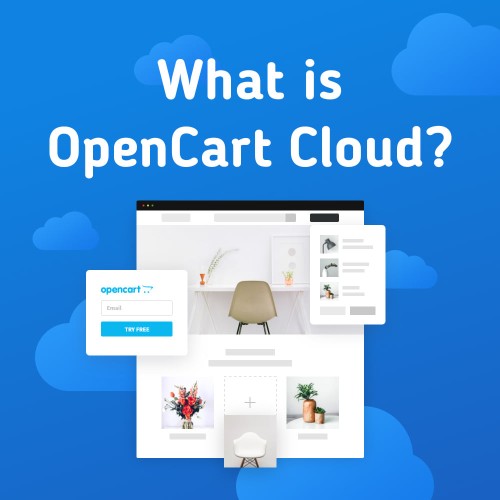Eco-Friendly E-Commerce: Sustainable Packaging Solutions and Practices
Planet Earth needs our help. We're destroying it bit by bit by dumping 10 million tons of plastic each year into landfills.
Sadly, the e-commerce industry is a major contributor to the abundance of plastic waste. With its boom, the waste is predicted to escalate and further worsen the situation.
With climate change taking its toll and carbon offsets destroying the environment, online businesses must prioritize a sustainable future.
In this blog, we'll explore eco-friendly packaging and shipping methods to promote a healthier planet and foster customer loyalty among eco-conscious consumers.
What makes sustainable packaging important?
Let's dive into why shifting to sustainable packing is so important.
Reduces carbon emissions
Sustainable packaging reduces carbon emissions by using energy-efficient and environmentally friendly materials throughout its lifecycle.
Here's a list of the materials that can be used in sustainable packaging:
Bioplastics derived from renewable sources like cornstarch, sugarcane, or potato starch
Mushroom packaging is biodegradable and can be molded into various shapes
Natural fiber materials such as coconut coir, palm leaves, and straw
Cotton, jute, and natural fibers to make bags and pouches
Bamboo-based products such as trays, cutlery, utensils
Recycled paper and cardboard
Plant-based films for wrapping
Did you know that the packaging industry emits 3.4% more greenhouse gasses than aviation? To cut carbon emissions, we must prioritize recyclable, reusable, and biodegradable materials.
Minimizes waste and burden on landfills
Biodegradable plastics, compostable materials, and natural fibers break down naturally when exposed to the environment. In other words, they decompose more rapidly than non-biodegradable materials, reducing long-lasting waste in landfills.
Turning to recyclable packaging prevents them from building up in landfills altogether. In fact, choosing a single reusable packaging item over single-use plastic can reduce solid waste by up to 86%.
Sustainable packaging is minimal yet sturdy to provide extra protection from damage in transit. So, if a food item is properly packaged, there's less need to discard it prematurely, reducing food waste and associated landfill contributions.
Provides long-term cost savings
While eco-friendly packaging might appear expensive from the get-go, it certainly provides monetary relief in the long term. Here are different ways to minimize overhead costs by going green with your e-commerce business:
Invest in durable packaging to lessen the risk of product damage during transportation, minimizing returns and replacements.
Use simple, lightweight packaging materials to cut transportation costs, as they require less fuel for shipping.
Simplify the return process to decrease the time and resources needed for handling returns and cut expenses.
Choose sturdy materials to shield the contents throughout the journey.
Producing lightweight materials requires fewer resources.
Sustainable packaging solutions for eco-friendly e-commerce
Are you ready to go green? Here are the best sustainable packing solutions to help you bring your eco-friendly e-commerce vision to life.
Simplify packaging: less is more
The e-commerce industry produces 4.8 times more packaging waste than brick-and-mortar stores. With an e-commerce boom, the numbers are only expected to increase unless businesses move toward more eco-friendly alternatives.
While shipping products to consumers, online retailers add tons of secondary packaging to provide cushioning during transportation.
As a business owner, it's time to adopt the "less is more" approach. Using less packaging means fewer resources are required to source the product. With lightweight shipping materials, less energy is used for transport.
A Good Company is a fine example of an e-commerce business that truly cares about nature.
They're adamant about using the best, recyclable, and biodegradable materials for packaging. And they've even put three months of effort into handpicking products that protect the environment from carbon emissions.
Their aim is to use recycled materials and source them in a way that doesn't require the cutting of trees or water usage.
Opt for carbon-neutral deliveries
Part of being an eco-friendly e-commerce business includes partnering with shipping companies that deliver products to consumers sustainably. That's why opting for carbon-neutral deliveries is essential to going green.
FedEx, one of the world's largest shipping companies, is working tirelessly to offset the impact of deliveries and achieve carbon neutrality by 2040.
What they do is calculate the total CO2 emissions released in a year during their deliveries and then buy the equivalent amount of CO2 to invest in low-carbon development or conservation projects to offset those emissions.
And they do all of this without charging an extra fee for shipping.
Use recyclable materials for product packaging
Every year, 26.82 million tons of plastic waste make it to US landfills. With a rise in e-commerce businesses, waste is only expected to grow unless businesses decide to go eco-friendly.
Because commonly used materials (read: plastic) take years to decompose in nature (as shown in the figure below), negatively impacting the environment.
It's time for e-commerce businesses to take climate change seriously and employ ways to reduce their carbon footprint around the world.
Some of the common recyclable packaging materials include:
Plant-based materials like corn, sugarcane, and bamboo
Glassine — glossy paper made of wood pulp
Corrugated fiberboard
Paper and cardboard
Cellulose
Clean Origin is one company that does eco-friendly e-commerce right in the jewelry industry.
Here's why:
They're committed to responsible and ethical sourcing of diamonds.
They offer lab-grown diamonds, which significantly reduce the environmental impact associated with traditional diamond mining.
They use recyclable and sustainable packaging materials, minimizing waste and environmental impact throughout the shipping process.
They place transparency at the core of their operations.
They provide detailed information about the origin and characteristics of each diamond, empowering consumers to make informed and ethical choices.
By providing conflict-free diamonds, they ensure that their products don't contribute to unethical practices or support regions with a history of conflict tied to diamond mining.
They educate customers about the eco-friendly benefits of lab-grown diamonds and the importance of sustainable choices in the jewelry industry.
Be accurate with product descriptions to reduce unnecessary returns
The average return rate for e-commerce products is around 20–30%. Out of which 22% of returns are caused by incorrect product descriptions. Or, as consumers like to put it, "product was not as described."
Businesses experience financial losses due to this, and the constant shipping contributes to increased fuel consumption and carbon dioxide emissions.
Therefore, it's necessary to put conscious effort into adding clear product descriptions to prevent unnecessary returns.
Giles Smith is a serial entrepreneur, e-commerce coach, and founder of Sustainable Ecommerce. He runs a podcast named after his company.
In one of the episodes, while talking about product descriptions for running an eco-friendly e-commerce business, he said,
"The two most important image types to consider here are factual images (that show exactly what the product looks like, how big it is, the color, fabric, pattern, etc.), and functional – how it works, what it will look like when worn, etc."
Smith also talked about adding short videos for each product to offer more clarity and ease for consumers and to fend off unwanted returns.
Resell returned items to extend their lifespan
As mentioned before, customers return about 20–30% of e-commerce products for different reasons. This results in financial losses for the business and more products ending up in landfills.
Today, many e-commerce businesses have now shifted toward the preloved trend. Here, they either partner with companies that only sell preloved items or with companies that recycle multiple materials to avoid burdening landfills.
Waste No More is a fresh concept by Eileen Fisher, a sustainable fashion brand in New York. Their team puts in an endless effort to revive pre-worn clothes.
They either transform old clothes into a new look or convert them into art. They aim to find potential where others only see garbage.
Invest in data center sustainability
As astonishing as it may sound, data centers are responsible for about 3% of the world's total electricity consumption and are projected to reach 4% by 2030 — a figure that continues to rise with the e-commerce boom.
With that, e-commerce businesses are increasingly turning their attention to data center sustainability.
By optimizing server configurations, implementing efficient cooling systems, and transitioning to renewable energy sources, companies can drastically reduce their carbon footprint while also enjoying significant cost savings.
Data center sustainability is more than a fancy buzzword. It's an intelligent approach that aligns profitability with environmental responsibility. Embracing this aspect can lead to not only a more successful e-commerce venture but also a brighter, greener future for all.
Final thoughts
Looking at the devastating pollution-related stats, it's clear that eco-friendly e-commerce is a necessity for the future of online retail. By adopting sustainable packaging solutions and selling sustainable products, e-commerce businesses can significantly reduce their environmental footprint.
Choosing durable products and sustainable packaging methods won't only enhance the customer experience but also help curb greenhouse emissions, making e-commerce a force for positive change in the world.
Embracing eco-conscious strategies in e-commerce is the way forward, as it promotes sustainability while building a strong and responsible brand image. It's high time to make a difference by making sustainable choices and creating a brighter, greener future for our planet.
How will you incorporate sustainable materials into your online business?



Login and write down your comment.
Login my OpenCart Account